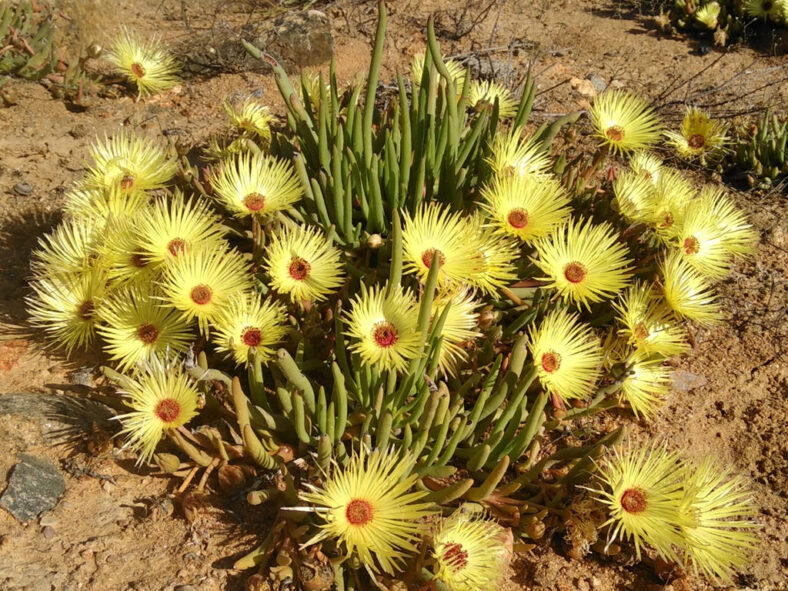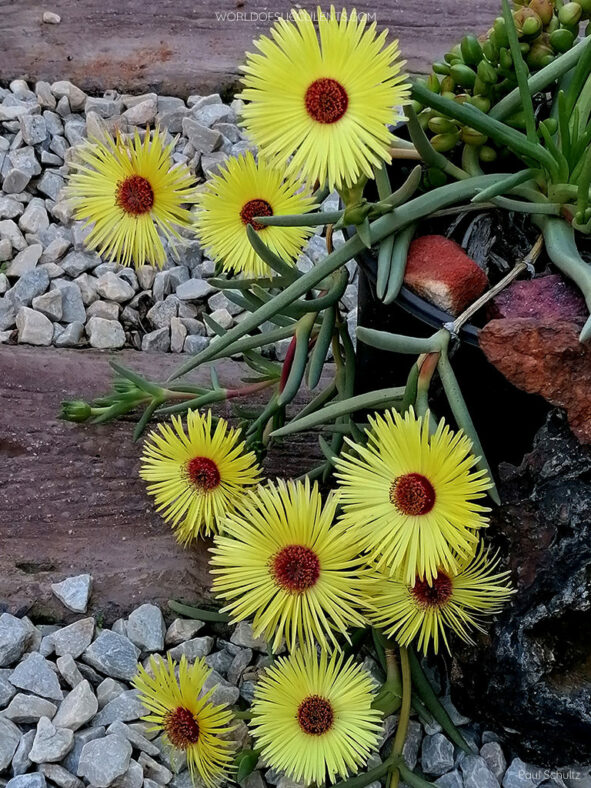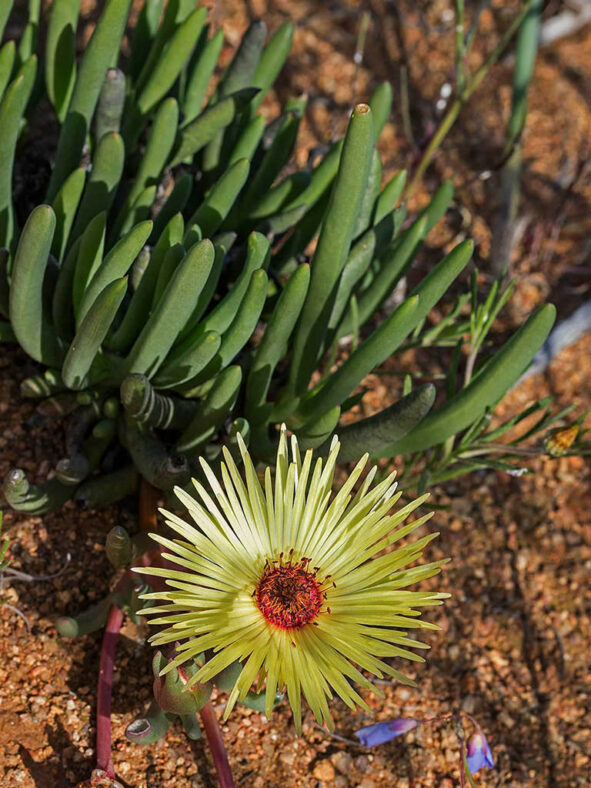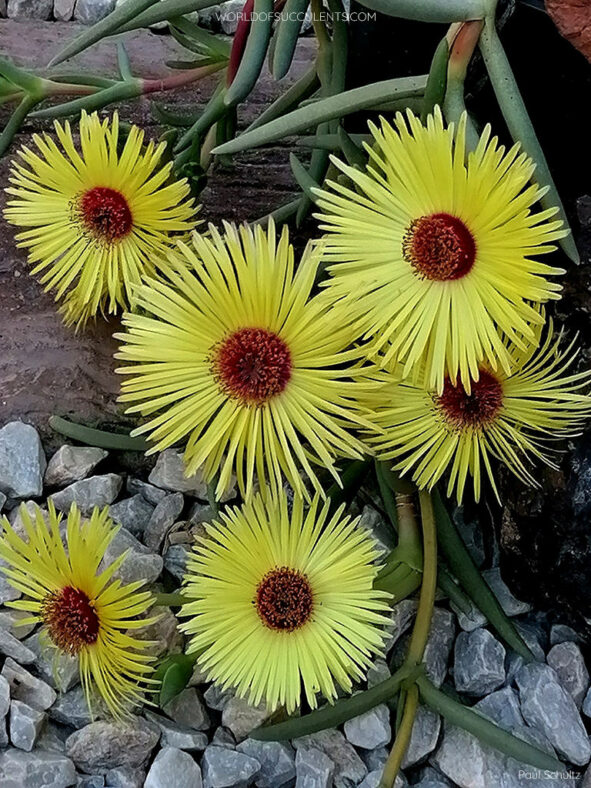Cephalophyllum pillansii is a cute, floriferous succulent plant endemic to Namaqualand.
Scientific Name
Cephalophyllum pillansii L.Bolus
Synonym(s)
Cephalophyllum pillansii var. grandiflorum, Cephalophyllum pillansii var. pillansii
Scientific Classification
Family: Aizoaceae
Subfamily: Ruschioideae
Tribe: Ruschieae
Genus: Cephalophyllum
Etymology
The specific epithet "pillansii (pronounced pil-AN-see-eye)" honors Neville Stuart Pillans (1884–1964), a South African botanist.
Origin
Cephalophyllum pillansii is native to Namibia and South Africa. It grows in sandy, loamy flats between granite or sandstone rocks in the western Namaqualand veld.
Description
Cephalophyllum pillansii is a compact succulent shrub with creeping stems and long, gray-green leaves that turn reddish to purplish when exposed to full sun. The fleshy leaves are cylindrical at the base, triangular in cross-section towards the apex, and up to 5.2 inches (13 cm) long.
This plant usually blooms in spring. The beautiful flowers have many yellow petals and brownish to purple stamens and can reach up to 2.5 inches (3.7 cm) in diameter. They are open only on sunny days. The fruits are capsules with 15 to 20 locules.

How to Grow and Care for Cephalophyllum pillansii
Light: This succulent requires bright light but not too much direct sunlight. So, a windowsill that receives 4 to 5 hours of direct sunlight in the morning and partial shade in the afternoon will be a perfect spot for indoor growing.
Soil: Cephalophyllum pillansii thrives in porous soil, allowing the water to drain away quickly. Therefore, use commercial soil for succulents or make your own well-draining mix.
Temperature: High temperatures are not a problem as long as there is plenty of fresh air, but this plant is not cold-hardy. It grows best in USDA Plant Hardiness Zones 9b to 11b, with average minimum winter temperatures ranging from 25 to 50 °F (-3.9 to 10 °C).
Watering: To keep your plant healthy, it is essential to know when, how much, and how often to water. During its dormant period, usually in summer, Cephalophyllum pillansii requires little or no water. Once it grows again in the fall, water thoroughly but allow the soil to dry between waterings.
Fertilizing: As long as you repot this plant every two years, it does not need fertilizer.
Repotting: Even if this plant can stay happy in the same pot for years, once in a while, you can repot it to give it more space anytime during the growing season. However, the best time is at the beginning of the growing season.
Propagation: Although Cephalophyllum alstonii is usually propagated from seeds, it can also be easily propagated by division. The best time to divide the plant is late summer, just before it begins to break dormancy, and the fall is ideal for sowing the seeds.
Learn more at How to Grow and Care for Mesembs.
Toxicity of Cephalophyllum pillansii
Cephalophyllum pillansii is considered non-toxic, so having it around kids and pets is safe.
Links
- Back to genus Cephalophyllum
- Succupedia: Browse succulents by Scientific Name, Common Name, Genus, Family, USDA Hardiness Zone, Origin, or cacti by Genus
Photo Gallery
Click on a photo to see a larger version.


